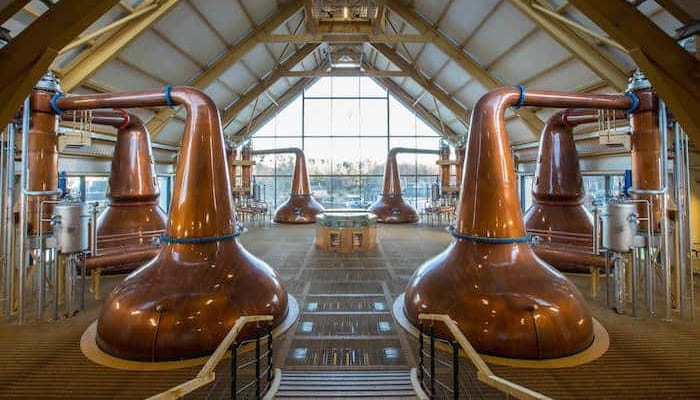Early Bird Deadline
30 November 2025
Judging
Date
23 March 2026
Winners Announcement
22 April 2026
30 November 2025
23 March 2026
22 April 2026

Whilst overall alcohol consumption is at best stagnating, a result of consumers paying increasing attention to health and wellness (today, 5.5 million UK adults say they don’t drink alcohol at all, up around 35% in just 5 years), there’s also a clear move to premium and craft products, with drinkers putting increasing value on quality over quantity.
This growing demand is being driven, in particular, by millennials and Generation X who are looking for authenticity, not only in terms of quality and taste, but because they’re interested in the back story – the history and tradition of the products they buy. So, quite simply, stocking craft products is a means to bucking the falling sales trends in mainstream sectors.
The growth in gin sales, for example (now over £1.6 billion, up some 40% in just a year), matches this growing consumer interest across markets in premium quality, provenance, craft, distinctiveness, and innovation, with dozens of premium, craft gin labels being launched in the last year, many with new and interesting taste profiles, not to say colours.
Rum is another example of a sector where craft products are driving growth (rum sales now exceed £1 billion, up a third in value in just 5 years). Here, premium products are leading the way with such things as single barrel, older expressions, emphasis on the country of origin and source.
Whisky in the form of single malts has in some senses led the craft movement for years and new secondary finishes are ringing the changes with secondary barrel finishes, which is about as far as it’s possible to go within the tight legislation that surrounds the production of Scotch whisky.
Beers and ciders are also categories where there’s a craft element with a longstanding history. Consumers see these are representing premiumisation, with quality and taste to the fore, as well as the environmentally-friendly production techniques employed. Craft beer sales are significantly up, today worth some £138 million, yet beer sales in general are in steady decline. As well as the exponential growth in mass market fruit ciders, craft apple ciders are showing a 10% growth year on year. There’s also been a renaissance in 100% apple and pear content ciders for the same reasons.
This growth in the craft, as opposed to the mass market, sector across the board means we ought to set out what we actually mean by a craft product. To most it’s defined by scale of production and ownership: so, small-scale, independently-owned companies – brewers, distilleries, cideries (and wineries) – using manual production techniques. From a consumer perspective, craft drinks are essentially set apart with products that have a strong story, usually a specific locality, and a focus on quality, using locally-sourced ingredients which ends up in a product with unique character and taste.

The growth in this consumer interest in craft – and the marked sales growth in these craft products – has also led to lively debate. This is especially prevalent when it comes to craft beers, but applies in other categories, too. Whilst some drinkers may not worry too much about the company behind the glass of beer they’re holding in their hand, others would like to think that they’re drinking a genuine craft-brewed beer, produced without compromise, using quality ingredients by a relatively small, independent brewer. The cudgels have been taken up by the Society of Independent Brewers against the big brewers for hoping to capture craft beer customers by sleight, as it were, as well as their particular target market, by buying an established, previously independent craft beer brewery.
From an on- or off-trade perspective, it depends on whether or not you believe that the passion of the original owners and the integrity of the original company ethos and a product’s quality and flavour (and not just beers, but ciders and spirits, too) can survive any takeover. Or whether your customers care. The jury’s still out in many cases as to whether decisions made in the name of economics and shareholder value will always to some degree change those intrinsically craft-based factors.
In any retail situation, whether your business is in the hotel, restaurant, club, pub or bar (HoReCa) sector or on-trade retailer, originality – creating points of difference – is really the name of the game if you want to win out in the highly competitive environment in which most establishments operate. What you stock is an area where it’s certainly very possible to be different and carve out a reputation that’s good for your business, keeping your existing clientele (even more) loyal as well as attracting new customers.
If we start from the position that craft drinks are innately innovative and different, then the craft drinks sector can be used to create a useful sense of ‘difference’ for customers and create a commercial advantage for your business.
Conveying this to your customers is a matter of using the marketing tools at your disposal, starting with word of mouth. Of course it’s social media that’s the modern word of mouth – and potentially hugely more efficient way of helping build a reputation, grow a client base, or getting people know to know about particular promotions. After all, there’s quite a lot of research to suggest that 50% of guests look to social media before heading out, so creating relevant messages which appeal directly to what they’ll find and experience by choosing one establishment and promotion over any others being run is key. That same research also suggests that social media can increase exposure to a venue by nearly 90%, and increase sales by over 50%.
A website becomes a prime means of promotion and it can pay dividends to put real effort – and sometimes even commit a little money – to optimise your venue positioning in local search results. However, getting a message out via your website and your own social media blogs, supported by paid-for ads on social media platforms is not all: your staff are the start point for rolling out and promoting all drinks programmes and in increasing customer awareness and programme take-up.
Don’t let’s forget simple bar and table tent cards can provide easy and effective support as part of on-premise merchandising (powerful too, with 50% plus hikes in sales rates reported), added to which the same promotional message can be highlighted on food and drinks menus and lists.
It really shouldn’t – doesn’t – take that much effort to grasp the opportunity and climb on the back of the growth in consumer interest in what’s innovative and different, a strong trend to buy less but better, as a means to grow your business.
About the Author

The article is contributed by Alistair Morrell, Wine Inspector, wine industry consultant, journalist and, commentator. Over 30 years as a wine business professional, Alistair shares his global knowledge, network, and experience of growers, importers, distributors and buyers.
Show your beers where it matters. Get your products tasted by top buyers and experts at the London Competitions — enter now.